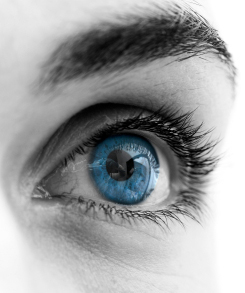 A pterygium is a wing-shaped growth that can occur on the eye and eventually cover and alter the shape of the cornea. Pterygia consist of abnormal conjunctival tissue (the membrane that covers the eye) . Pterygia can be small or grow large enough to affect a person’s vision. It is not clear why pterygia form, but they are twice as likely to occur in males than in females and are most often found in people who live in eye-irritating environments, such as windy climates, smoky places or sandy tropical locations.
A pterygium is a wing-shaped growth that can occur on the eye and eventually cover and alter the shape of the cornea. Pterygia consist of abnormal conjunctival tissue (the membrane that covers the eye) . Pterygia can be small or grow large enough to affect a person’s vision. It is not clear why pterygia form, but they are twice as likely to occur in males than in females and are most often found in people who live in eye-irritating environments, such as windy climates, smoky places or sandy tropical locations.
While pterygia aren’t dangerous, if large enough, they can obstruct a patient’s vision. The most commonly reported symptoms of pterygia are irritation, redness, dryness, tearing and the sensation of having something stuck in the eye. In most cases, it’s the symptoms of pterygium that are treated, not the pterygium itself. Eye drops and other medications are given to alleviate the dryness and other bothersome effects of the pterygium. Surgical excision of the pterygium is reserved for the most severe cases.
Surgery to remove the pterygium is done on an outpatient basis under local anesthesia. Patients usually go home the same day and are in very little pain. During the recovery period, the patient may wear a patch to protect the eye and apply drops to the eye or ointments in order to speed up the healing process. Redness and irritation may be present as the eye heals from the surgery.
Because the symptoms of pterygium closely resemble the symptoms of other, more serious eye diseases, proper diagnosis by a qualified ophthalmologist is very important. If you are experiencing any of the symptoms associated with pterygium, schedule a complete consultation with one of our qualified ophthalmology staff. Our professionals can determine whether you might be a candidate for pterygium excision and decide which other avenues of treatment may be available to you.
